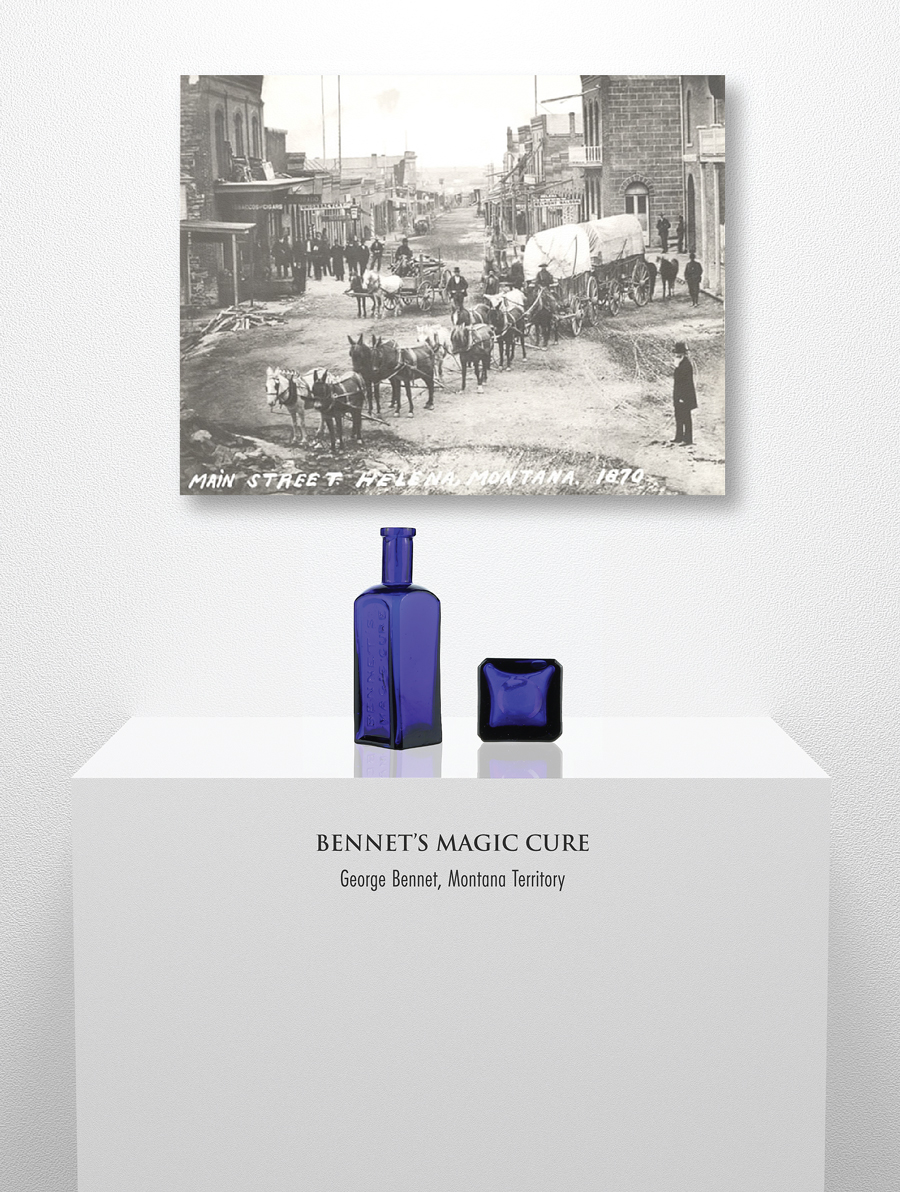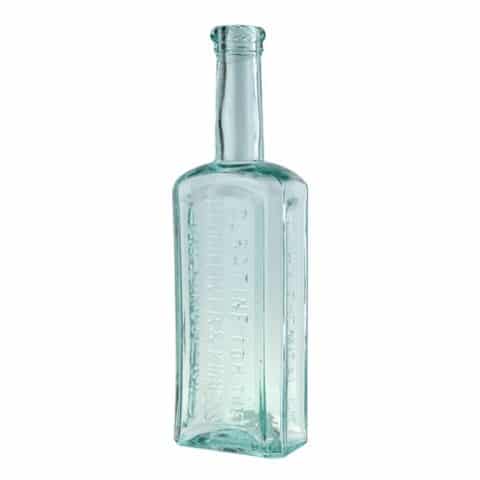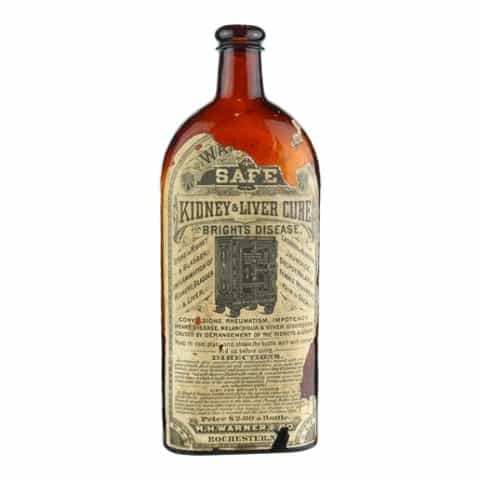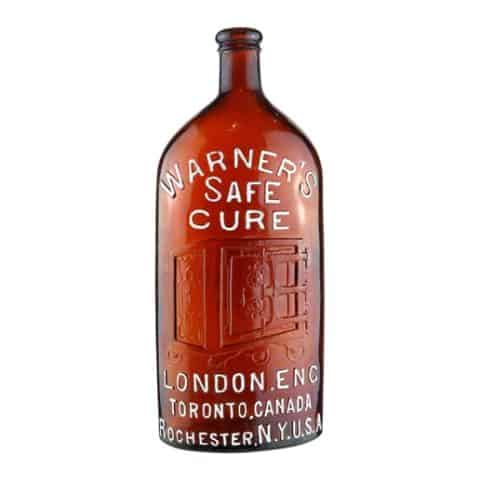Bennet’s Magic Cure
Bennet’s Magic Cure
George Bennett, Montana Territory
Dark Cobalt Blue
Provenance: Bob Jochums Collection

It is fairly common knowledge among cure bottle collectors that all examples of this uncommon bottle have been found in Montana. What is not commonly known is that this bottle dates from an era when Montana was still Montana Territory, not becoming the 41st state in the Union until 1889.
Newspaper articles or advertisements promoting and supporting this product have only been found in a small number of towns in the wild and mountainous west of the Montana Territory, where a gold rush and subsequent silver boom from 1862 to 1893 brought miners to the rugged land.
Their efforts to strike it rich and their need to replenish perishable foodstuffs and goods encouraged the growth of small towns supplied by riverboat travel up the Missouri River toward the headwaters that begin in the Rocky Mountains that form the westernmost portion of the Territory where gold was discovered. The rapid influx of people led to boomtowns that grew quickly and declined just as swiftly when the gold ran out.
One such boomtown grew out of a prospecting effort in the Prickly Pear Valley. The initial group of four miners had decided that this would be their final get-rich effort and named their claim Last Chance Gulch in July of 1864. There were more than 100 cabins on the hillsides by fall, and the community named their new and wealthy town Helena. Approximately 50 millionaires inhabited the area in this future state capital by 1888.

Originating in 1864, Helena was just six years old at this time.
In 1870, towns like Helena (population 3,100) and Fort Benton (population 1,618) produced weekly newspapers advertising Bennet’s Magic Cure as the best medicine available for the treatment of rheumatism (any disorder of the extremities or back, characterized by pain and stiffness).
People with high expectations had discovered that mining required interminable toil in harsh weather…”grueling labor even to men used to hard work,” as a prospector wrote in a letter to his family in 1865.
Bennet’s Magic Cure was purportedly, and logically, a liniment. This product was only advertised in Montana Territory newspapers between 1876 and 1884—and not at all in other nearby territories or states.

Our exceptional museum example was made in a rich dark cobalt blue glass with the text embossed in two lines in an inset panel, reading vertically from base to shoulder in a sans serif typestyle. The three other panels are blank and flat and may have been used for a long-lost paper label. The bottle has a square-banded tooled top and a smooth base and is out of the Bill Agee collection via the Larry Hicks collection. Bennet’s Magic Cure was used on the Collecting the Cures book cover.
The proprietor of this attractive medicine which measures only 5 ¼ inches tall and 1 ¾ inch square, was George Bennet (sometimes written in newspaper advertisements as Bennett with two “t”s). Little is known about Bennet before his name was embossed on this bottle. He was in service in the U.S. Army at Fort Shaw in 1870 at the age of 21, along with his brother James Bennet (age 26) and his father John Bennet (age 46). Fort Shaw was built in 1867 and was one of two U.S. Army forts intended to protect the proliferating mining settlements in Montana. How he came to develop a medical product six years later at the age of 27 is not known, but his ownership was short-lived. During the first year of advertising his product, he sold “the sole right and title” to his product to Mr. Jesse Armitage.
George Bennet and Jesse Armitage knew each other from their positions as officers in the I.O.G.T. (Independent Order of Good Templars) in October of 1876. The I.O.G.T. was a fraternal organization modeled on Freemasonry, and they stood for the advancement of total abstinence.
Jesse Armitage was most likely well known around Helena as a delegate to the Republican County Convention, a local vocal and instrumental concert participant, and a businessman with a grocery establishment. In 1873 he had returned, it seems, from his mining enterprise in the region, and he exhibited choice specimens of quartz containing silver.
Conceivably Bennet’s cure was a product that both parties felt could be better marketed by an established and seasoned businessman. After the sale of the rights to his product, the 1880 Federal census shows Bennet had returned to his birth state of New York, lived in Brooklyn, had a wife and three-year-old daughter, and was a musician by occupation.
It was common practice for a product to be promoted and offered for sale by agents in various towns separated by some distance from a primary location. Jesse Armitage had agents in Fort Shaw and Fort Benton, 83 and 133 miles from Helena.
Common with the marketing of cures were claims of certain or even “magical” relief. If a cure doesn’t provide relief to the suffering patient, perhaps the diagnosis wasn’t correct, and the product shouldn’t have been expected to cure it.
Primary Image: Bennet’s Magic Cure imaged on location by Alan DeMaison, FOHBC Virtual Museum Midwest Studio.
Research: Bob Jochums, Berkeley Lake, Georgia
Support Image: Auction Lot 60: “Bennet’s / Magic Cure” Medicine Bottle, America, 1860-1880. Square with beveled corners, cobalt blue, applied square collared mouth – smooth base, ht. 5 1/8 inches; (1/8 inch open bubble on front base edge). AAM pg. 51 A rare cure bottle possibly from Montana. Beautiful color. – Norman Heckler Jr. & Sr., Norman C. Heckler & Company, Auction #107
Support Image: Auction Lot 120: “Bennet’s / Magic Cure” Medicine Bottle, America, 1860-1880. Square with beveled corners, deep cobalt blue, applied square collared mouth – smooth base, ht. 5 1/8 inches; (1 inch “U” shaped fissure in corner of base, 1/2 inch chip at edge of panel, overall exterior wear). AAM pg. 51 A rare cure bottle in a vibrant color. Dr. Charles and Jane Aprill collection. – Norman Heckler Jr. & Sr., Norman C. Heckler & Company, Auction #172
Support Image: Main Street, Helena, Montana Territory, 1870. Originating in 1864, Helena was just six years old at this time. – Western Mining History
Support: Reference to Bottles on Montana’s Mining Frontier by Ray Thompson, Bottles and Extras, Fall 2004, pages 14-20
Support: Reference to Montana’s Gold and Silver Boom, 1862-1893, Montana Historical Society
Support: Reference to Collecting the Cures, Bill Agee, 1969, pages 6 & 7.
Join the FOHBC: The Virtual Museum is a project of the Federation of Historical Bottle Collectors (FOHBC). To become a member.

































